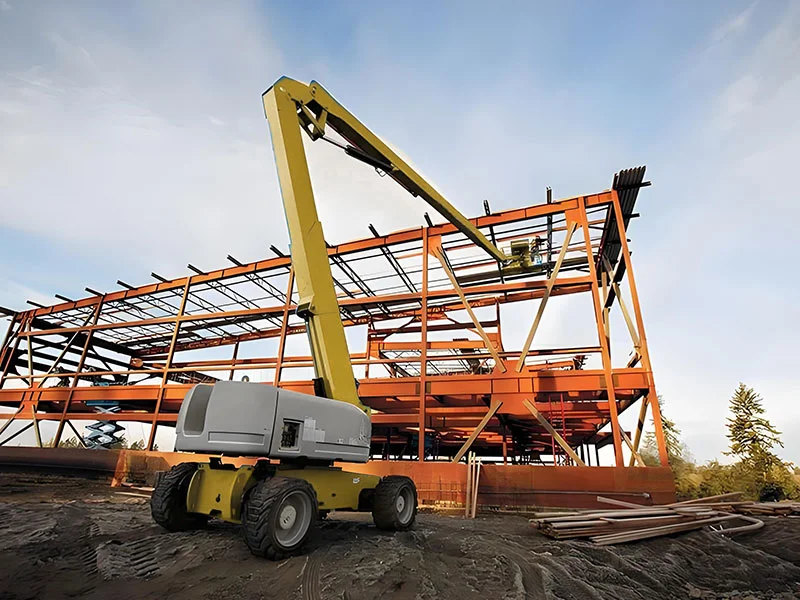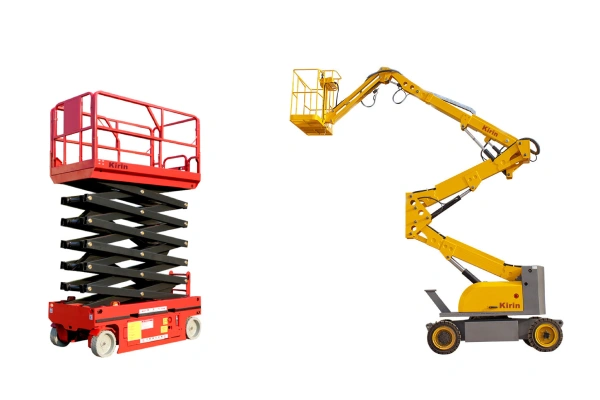
Introduction
Boom lifts are incredible pieces of machinery, essential for a wide range of elevated tasks, from construction and maintenance to tree trimming and utility work. Their ability to reach significant heights and extend horizontally makes them indispensable. However, with great capability comes great responsibility, especially when it comes to safety. A common concern, and a critical one to address, is the question: “Do boom lifts tip over?” Understanding the risks associated with these powerful machines is paramount to ensuring the safety of operators and those around them.
Can They Tip?
The direct answer is yes, unfortunately, boom lifts can tip over. While designed with sophisticated stability systems and safety features, boom lift accidents, including tip-overs, do occur. These incidents are often preventable and are typically the result of a combination of factors, usually involving improper operation, environmental conditions, or a lack of maintenance. The key is to understand why and how these incidents happen so that they can be avoided.
Understanding Boom Lift Stability
Boom lifts stability is a complex engineering achievement. These machines are designed to maintain balance even with significant loads at height. Their stability is primarily achieved through a wide base, outriggers (on many models), counterweights, and sophisticated control systems that monitor load and reach. The center of gravity is a crucial concept here; as the boom extends and lifts, the center of gravity shifts. Manufacturers meticulously design these machines to keep the center of gravity within the machine’s stable footprint under specified operating conditions. Any deviation from these conditions can compromise stability.
Primary Factors Contributing to Boom Lift Tip-Overs
Several critical factors can contribute to a boom lifts tip-over:
- Uneven or Unstable Ground: Operating a boom lift on sloped, soft, or uneven terrain is one of the most common causes of instability. The machine’s base needs a firm, level foundation to maintain its balance.
- Exceeding Load Capacity: Every boom lift has a clearly defined maximum weight capacity for its platform. Overloading the boom lift with personnel, tools, or materials can quickly shift the center of gravity outside the stable zone, leading to a tip-over.
- High Winds: Strong winds can exert significant force on the boom and platform, especially when extended. This force can destabilize the boom lift, even if it’s within its rated load capacity. Many boom lifts have wind speed limitations.
- Improper Outrigger/Stabilizer Use: If equipped, outriggers or stabilizers are crucial for enhancing stability. Failing to deploy them correctly, or deploying them on an unstable surface, can compromise the boom lift’s integrity.
- Sudden or Jerky Movements: Rapid movements of the boom or platform, especially at full extension, can create dynamic forces that destabilize the boom lifts. Smooth, controlled operation is essential.
- Contact with Objects: Colliding with overhead structures, power lines, or other obstacles can destabilize the boom lift and lead to a tip-over.
- Mechanical Failure: While less common with proper maintenance, a mechanical failure in the hydraulic system, boom structure, or control system can contribute to a loss of stability.
- Lack of Operator Training: Untrained or inexperienced operators are more likely to make errors that lead to dangerous situations. Proper training is fundamental to safe boom lift operation.

Preventing Boom Lift Tip-Overs: Best Practices for Safety
Preventing boom lift tip-overs boils down to adherence to safety protocols and a thorough understanding of the equipment. Here are best practices:
- Operator Training and Certification: Ensure all boom lifts operators are fully trained, certified, and competent in the specific model they are using.
- Pre-Operation Inspection: Conduct a thorough pre-operation inspection before every use. Check tires, fluid levels, controls, safety devices, and the general condition of the boom lift.
- Site Assessment: Always assess the work area for hazards. Identify uneven ground, slopes, overhead obstructions, power lines, and ground conditions.
- Level and Stable Surface: Operate the boom lifts only on a firm, level, and stable surface. Use outrigger pads or cribbing as necessary to distribute weight and ensure a solid foundation.
- Adhere to Load Capacities: Never exceed the manufacturer’s rated load capacity for the boom lift platform. This includes the weight of personnel, tools, and materials.
- Monitor Wind Conditions: Be aware of wind speeds. If wind speeds exceed the manufacturer’s recommendations, cease operation of the boom lift.
- Proper Outrigger/Stabilizer Deployment: If your boom lift has outriggers, ensure they are fully and correctly deployed on solid ground before elevating the platform.
- Smooth and Controlled Movements: Operate the boom lift with smooth, deliberate movements. Avoid sudden starts, stops, or jerky motions.
- Maintain Safe Distances: Always maintain safe distances from power lines, overhead obstructions, and other equipment.
- Regular Maintenance: Implement a strict preventative maintenance schedule for your boom lifts to ensure all components are in good working order.
What to Do If a Tip-Over Occurs
While prevention is key, knowing what to do in the event of a boom lifts tip-over is crucial for minimizing harm.
- Stay Calm: Panic can lead to further injury. Try to remain as calm as possible.
- Brace Yourself: If you are in the platform, brace yourself for impact. Hold onto the guardrails firmly.
- Do Not Jump: Never attempt to jump from a tipping boom lifts. This can result in more severe injuries than staying with the machine.
- Seek Medical Attention: Once the boom lift has settled, assess yourself and others for injuries. Even if you feel fine, seek medical attention as soon as possible.
- Report the Incident: Report the tip-over to your supervisor and relevant authorities immediately. An investigation will be necessary to determine the cause and prevent future occurrences.
- Secure the Area: Once it’s safe to do so, secure the area around the tipped boom lift to prevent further accidents.
Conclusion
While the prospect of a boom lift tipping over is concerning, it’s important to remember that these incidents are largely preventable. By understanding the principles of boom lift stability, recognizing the contributing factors to tip-overs, and diligently following best safety practices, operators can significantly mitigate the risks. Prioritizing thorough training, diligent pre-operation checks, and adherence to manufacturer guidelines are not just recommendations; they are non-negotiable requirements for safe and efficient boom lift operation. Stay safe, stay smart, and always put safety first when working with a boom lift.
FAQs
Q: How often do boom lifts tip over?
A: While specific statistics vary, boom lift tip-overs are relatively uncommon when operators follow safety guidelines. However, they do occur and are often serious, highlighting the importance of prevention.
Q: Can strong winds really tip over a boom lift?
A: Yes, strong winds can significantly impact boom lift stability. The large surface area of the platform and boom can act like a sail, and if wind speeds exceed the manufacturer’s limits, the boom lift can become unstable.
Q: What’s the most common reason for a boom lift to tip over?
A: Operating on uneven or unstable ground, exceeding the load capacity, and improper use of outriggers are among the most common reasons for boom lift tip-overs.
Call to Action:
Ready to enhance your team’s safety and efficiency? Contact us immediately to learn about a comprehensive arm lift training program tailored to your needs, or check out our extensive range of high-quality, safety compliant arm lifts. Your safety is our priority!


